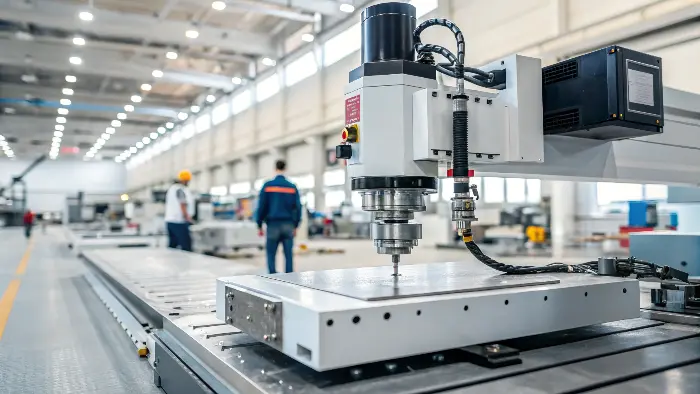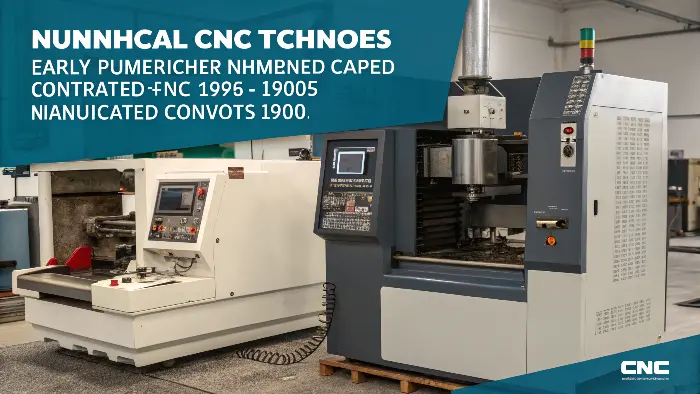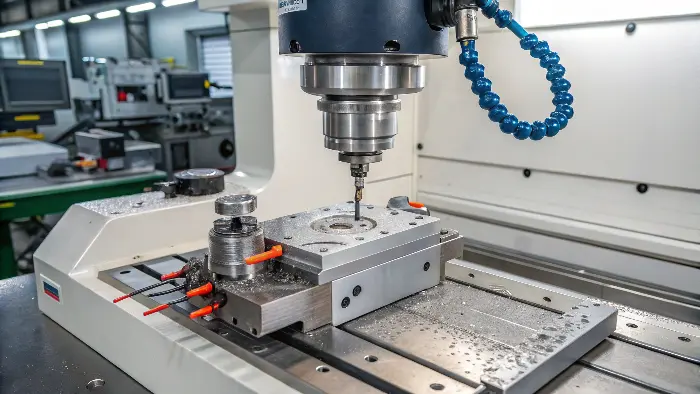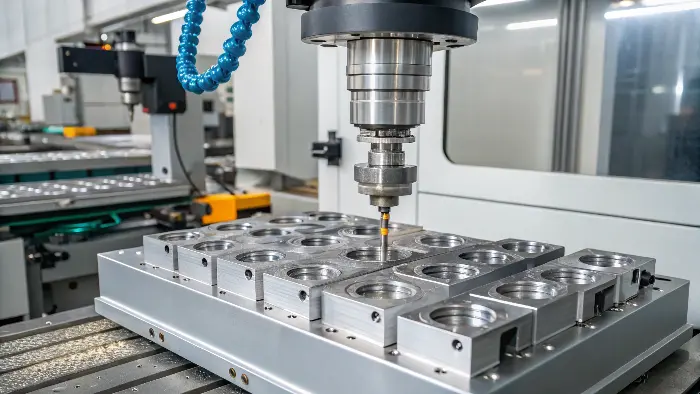Are you finding it hard to get consistent quality in your parts, or are slow production times causing delays? These problems can lead to expensive mistakes and unhappy clients. CNC machining offers a strong solution, changing how we make precise components.
CNC machining is revolutionizing manufacturing by automating complex processes, which greatly improves precision, speed, and efficiency. It allows for making detailed parts with very little human error. This makes it a key part of modern production for engineers like Alex, who need top quality and reliability.

You have probably heard about CNC machining, and maybe you even use it in your projects. But do you fully grasp how much it impacts our industry and how it keeps evolving? Let’s look at the main ways CNC technology is making a big difference, from where it started to what it can do in the future. This will show you it’s not just a tool; it’s a complete game-changer for manufacturing.
How has CNC machining evolved?
Have you ever wondered how we went from doing everything by hand to today’s precise automation? Knowing this journey helps us appreciate what we can do now and what’s possible next. The story of CNC machining’s growth is all about smart new ideas.
CNC machining grew from early numerical control (NC) systems in the mid-1900s, which used punched tape. Now, we have advanced computer-controlled systems. This change has massively increased the precision, speed, and complexity of parts we can make, making it essential for modern engineering.

The journey of CNC machining is quite something. I remember when I first started working in a CNC shop. Some of the older machines still showed signs of the early NC days. It’s amazing to see how far we’ve come.
From NC to CNC
The idea started with Numerical Control (NC) back in the 1940s and 50s. The U.S. Air Force really pushed for it because they needed complex parts for aircraft. These early systems used punched paper tapes to tell the machine tools what to do. It was a big step up from doing everything by hand, but it was still a bit clumsy. I’ve heard stories from older colleagues about how tedious it was to prepare and manage those tapes.
The Computer Revolution
The real change came when computers were added. This turned NC into CNC, which stands for Computer Numerical Control. This happened slowly, starting in the 1960s. When microprocessors came along, CNC machines became cheaper, more powerful, and easier to program. Then, CAD/CAM software appeared. This software lets engineers like Alex design parts on a computer and create the machine code directly. This made the whole process, from design to making the part, much smoother. I’ve seen with my own eyes how this has cut down project times for many of my clients. Today, we have machines that can move in many directions, smart controllers, and even AI to help make things better. This makes CNC more useful than ever.
How have CNC milling machines revolutionized modern manufacturing?
Are you searching for better ways to make complex, high-precision parts quickly and efficiently? Old methods can be slow, expensive, and often struggle with detailed designs. CNC milling machines offer a new and better way to remove material and create parts.
CNC milling machines have changed manufacturing by automating how material is removed from a workpiece with amazing precision. They use spinning cutting tools to make complex shapes, slots, and holes. This allows for the production of very accurate parts for many industries, like aerospace and medical devices.

CNC milling is a really important part of modern manufacturing. I have used it for so many projects. The basic idea is subtractive manufacturing. This means you start with a block of material and carefully cut it away to get the shape you want.
Versatility and Precision
What makes CNC milling so revolutionary is that it can do so many things and do them very accurately. These machines can work with lots of different materials, like aluminum, steel, plastics, and composites. This is very important for an engineer like Alex, who needs parts with very tight tolerances for robotic arms. CNC mills can make parts accurate to ±0.01mm or even better. I’ve personally overseen jobs where such precision was critical for the final product’s success.
Key Advantages of CNC Milling:
| Feature | Benefit |
|---|---|
| Automation | Less manual work and fewer human mistakes. Machines can run 24/7. |
| Complexity | Can make very detailed shapes that are impossible with manual methods. |
| Speed | Faster production times compared to old machining ways. |
| Repeatability | Makes sure all parts are the same quality, especially in large batches. |
I have seen projects where complex parts, which would have taken weeks to make by hand, are milled in just a few hours with much better accuracy. This speed and precision save money and help my clients get their products to market faster.
How do CNC machines enhance the repeatability of manufacturing processes?
Do you find it hard to get consistent quality when you need to make many identical parts? Small differences can cause problems during assembly, lead to product failures, and mean more wasted material. CNC machining gives amazing repeatability, making sure every part is made to the exact specifications.
CNC machines improve repeatability by following the exact same programmed instructions for every part. This gets rid of differences caused by human operators. So, every component made is almost identical in size and quality. This is very important for mass production and for parts that need to be interchangeable.

Repeatability is one of the biggest pluses that CNC machining offers. When an engineer like Alex designs a part for something like a robotic joint, he needs every single one to be exactly the same. This ensures the robot works smoothly and parts can be easily replaced. CNC is perfect for this.
The Role of Automation
The main reason for this is automation. Once you load a program into a CNC machine, it can run that program again and again. It will produce parts with amazing consistency. The machine doesn’t get tired or distracted. Its movements are controlled very precisely by the computer. This is very different from manual machining. Even the best operator will make tiny changes from one part to the next. I’ve managed many projects where this consistency was key to success.
Factors Ensuring Repeatability:
- Precise Control Systems: Modern CNC controllers and servo motors make sure the tool is always in the exact right place.
- Rigid Machine Construction: Strong machines don’t vibrate or bend much during cutting, which helps keep things accurate.
- Automated Tool Changing: The machine automatically uses the correct tool every time, consistently.
- In-process Probing: Some advanced machines can even measure the part while it’s being made and make small adjustments if needed.
I have managed production runs of thousands of parts. The difference between the first part made and the last one was tiny. This kind of consistency is vital for industries like automotive, aerospace, and medical devices. Quality control is extremely important in these fields. It means less waste, lower inspection costs, and, in the end, more reliable products.
How can CNC machines be used for greener manufacturing?
Are you worried about how your manufacturing processes affect the environment? Old methods can waste a lot of material and energy. CNC machining offers several ways to make production more sustainable and environmentally friendly.
CNC machines help make manufacturing greener by using materials more efficiently, reducing waste because they are so precise, and allowing for energy-saving processes. Their accuracy means less scrap. Advanced software can also plan toolpaths to save energy and material, helping to meet sustainability goals.

Being sustainable is more and more important in manufacturing, and that’s a good thing. I believe CNC machining has a big part to play in making our processes greener. It is a subtractive process, which means it does create some waste like chips. However, the precision it offers is very important.
Minimizing Material Waste
Because CNC machines are so accurate, they create much less scrap than manual methods. We can also design parts to use material more efficiently. For example, special software called nesting software can arrange many parts on one sheet of material. This reduces the amount of leftover material. I always talk to my clients, like Alex, about how their design choices can affect how much material is used. It’s a conversation I have often, as we plan production.
Energy Efficiency
Modern CNC machines are also getting better at saving energy. Things like regenerative braking in the spindles (which captures energy), energy-saving modes when the machine is not working, and smart cutting strategies from CAM software all help use less energy.
Other Green Aspects:
- Reduced Rework: High precision means fewer bad parts. This saves materials and energy that would be spent fixing or remaking them.
- Use of Recyclable Materials: CNC machines can work well with recycled or recyclable materials.
- Dry Machining/MQL: New methods are leading to less use of coolants, or using very small amounts (Minimum Quantity Lubrication – MQL). This is better for the environment.
There is always more we can do, but the direction is clear. CNC technology is changing to support manufacturing practices that are better for our planet.
Conclusion
CNC machining has truly changed manufacturing. It gives us amazing precision, speed, and repeatability. From its early beginnings to the advanced systems we have today, it keeps pushing innovation and efficiency. It helps engineers like Alex create complex designs and also helps us move towards greener production methods.


